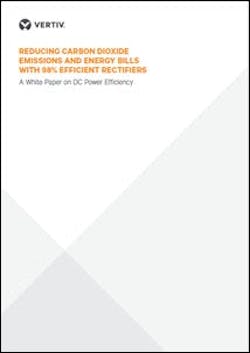Reducing Carbon Dioxide Emissions and Energy Bills with 98% Efficient Rectifiers
The demand for mobile communication is continuously increasing worldwide. This trend has been obvious for many years, yet substantial investments are still needed to cope with increasing traffic and new services. This includes new sites, more telecom equipment and more dispersed network infrastructure. All of this equipment needs energy. New equipment normally is more energy efficient, but that doesn’t offset the growth in traffic.
The trend of more power sources generating more carbon dioxide can’t be sustained indefinitely. Therefore, system providers are working hard to reduce energy in every part of the network. For nearly a decade, rectifiers with 96-97% efficiency have been available, helping to reduce the carbon footprint at many operator sites.
As we continue to focus on increasing efficiency and reducing energy consumption, a major milestone in rectifier efficiency has been reached — 98% efficient rectifiers with a flat efficiency curve are now available, optimizing energy consumption at every load condition.
This paper from Vertiv explores how with technology advancements and components such as gallium nitride (GaN) that enable ultra-high 98% efficiency and improved power densities, power loss can be reduced up to 50% compared to 96% efficient rectifiers.
